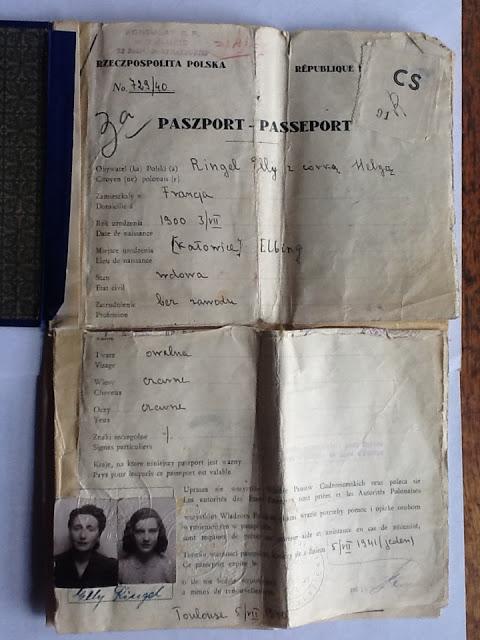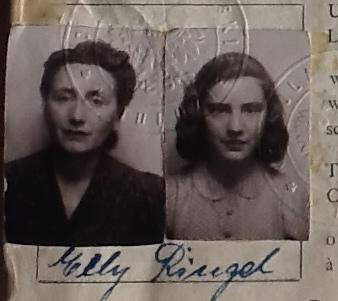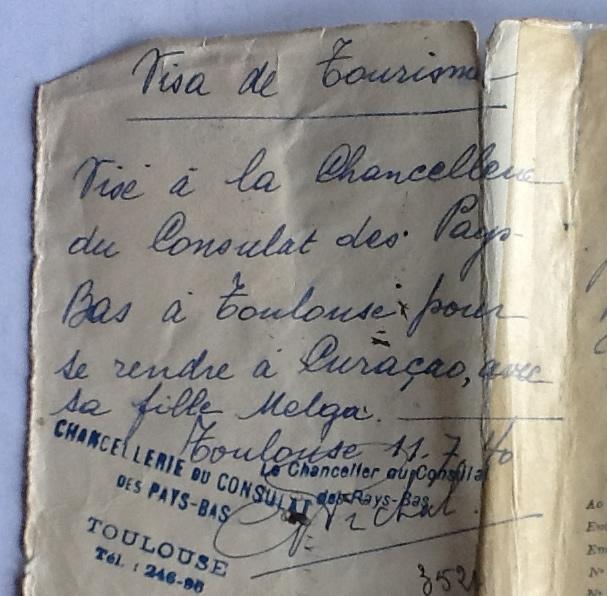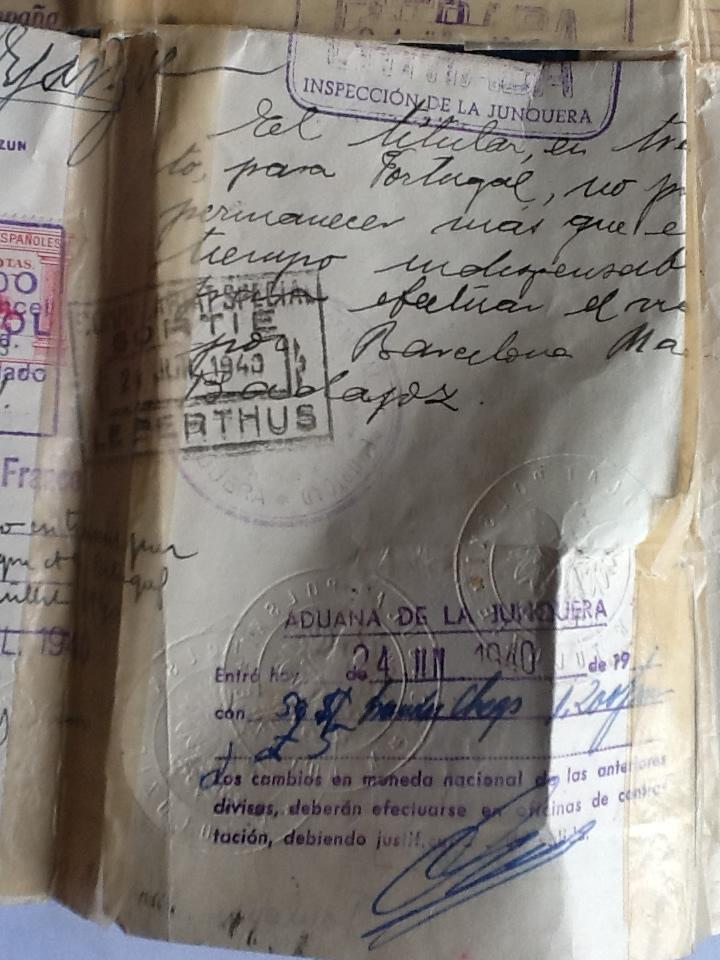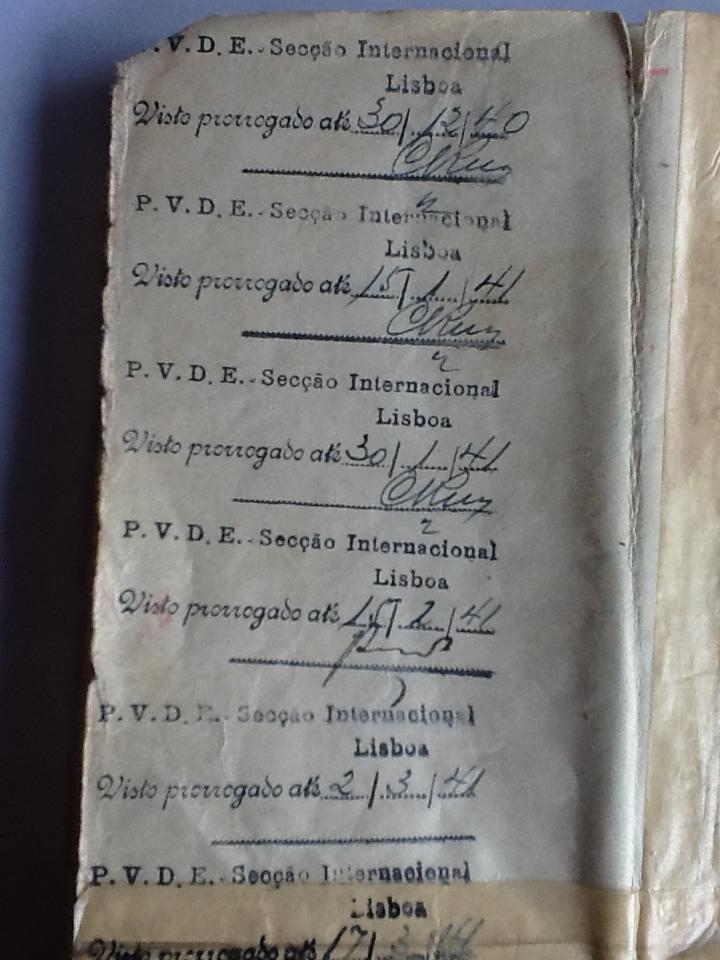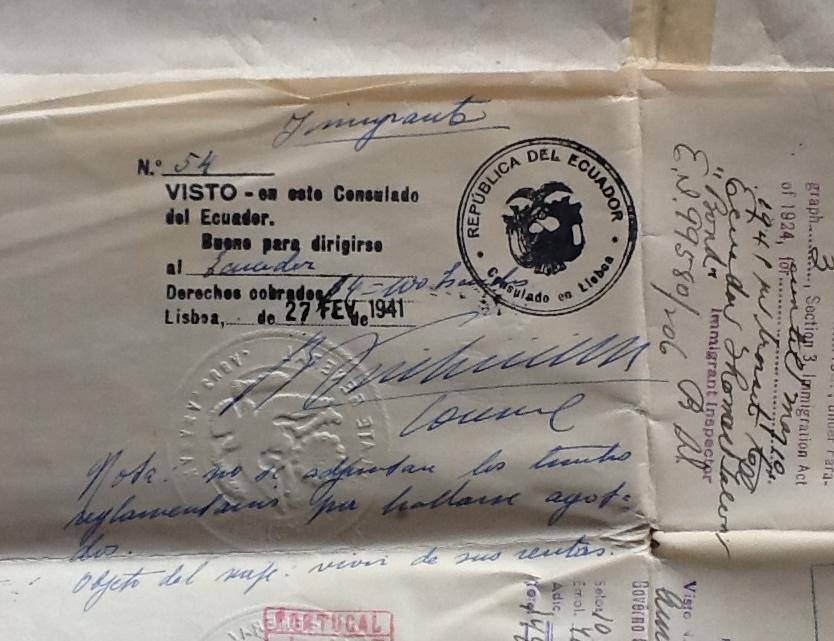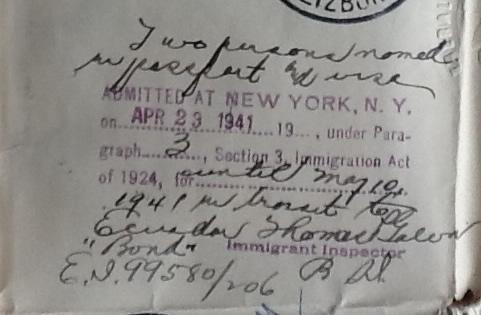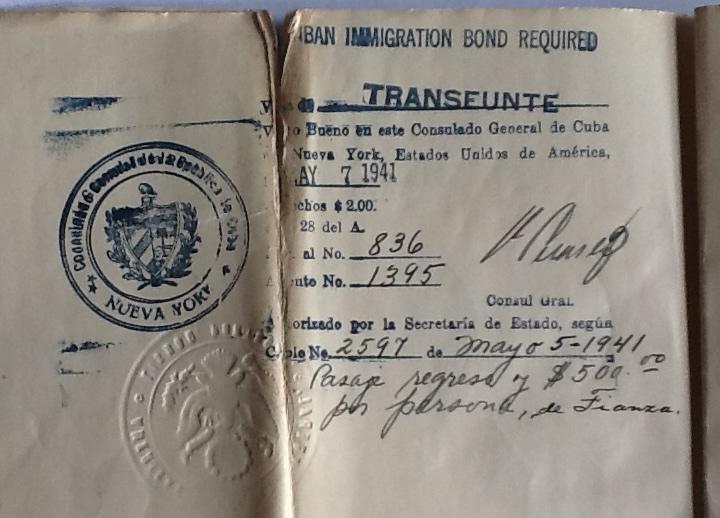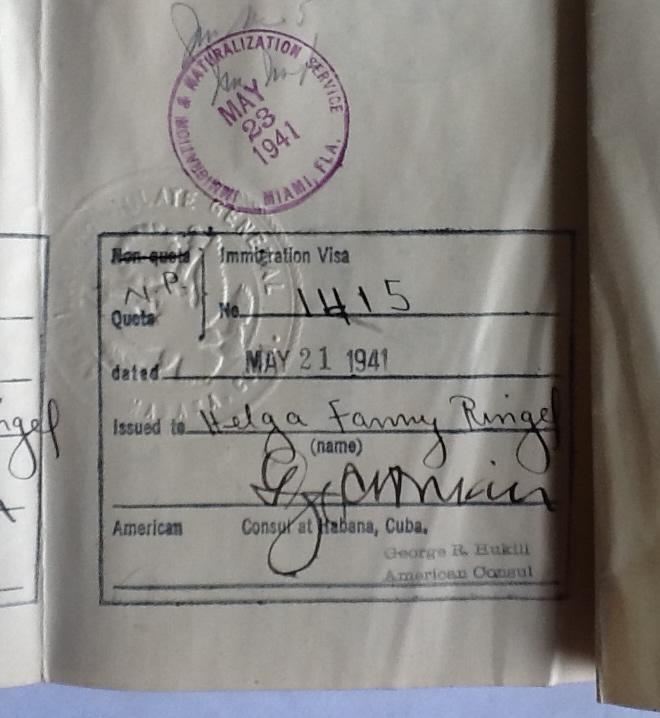From Toulouse to Miami — our refugee family's trek told in passport visas
Speaking with Walter earlier about Elly's travel documents, I said I would take a close look at the many visa stamps and hand notations in her Polish passport, and thus see if we could reconstruct her journey with Helga to America. I've done that now and will do my best to summarize it.
First, here's the first page of the passport in full and then a close up on the photos of Elly and Helga. I'll put in a few photo details of visa stamps on subsequent pages as we go along.
The first point to make is that these documents cover only the last 11 months of their journey. The passport is issued to Elly in Toulouse, France, on July 5, 1940, and she will use it until May 23, 1941, when she and Helga enter Miami as legal immigrants.
We see in detail what happens in those 11 months, but I wish we knew as much about their activities and movements in the previous 20 months since their escape from Germany.
So we start in Toulouse. Why Elly receives a passport from the Republic of Poland at first seems mysterious, but we are given a clue. Among her papers is a French translation made in Nice on May 28, 1940 of a 1906 document establishing Hermann Ringel's original domicile in Polish Galicia. We don't know why Hermann needed that document when he was 18 years old, but it appears Elly is using that documentation in 1940 to establish her credentials for the passport.
Her name, birth date and birth place on the passport are accurate, although the notation about Katowice is puzzling. As it says, her birthplace is Elbing, in present day Poland, so it is ironic that she seems to need to her deceased husband's domicile record to obtain Polish documents.
But got them she did. The passport covers Elly and her daughter Helga. It is good for one year, until July 5, 1941. It is signed by Elly below the ID photos of mother and daughter.
Now we are going to turn the page and follow along carefully the dates and places.
On July 11, the Consulate of the Netherlands in Toulouse grants a tourist visa for travel to the Caribbean island of Curacao. The same day, the consulate of the Republic of Portugal in Toulouse approves a transit visa to pass through Portugal for the purpose of travel to Curacao.
It appears that on the next day, July 12, Elly traveled several hours by train to the nearby city of Perpignan to obtain a transit visit from the consulate of Spain allowing them to pass through Spain on the way to Portugal.
Back in Toulouse on July 16, she prepares for the next phase of her journey, buying train passages for the several legs of the journey. We have the receipt for the first leg to Perpignon that records how much baggage she is bringing--a total of eight pieces at a weight of 206 kg.
They travel to Perpignon on July 19, where it appears they stay for four days at the Hotel Moderne. On July 23, they pay 10 francs for a French exit visa. The next morning, they depart Perpignon and receive an exit stamp at the French border crossing at Le Perthus.
On the Spanish side of the border at La Junquera, there is an entrance stamp from the Spanish Direccion General de Seguridad. There is also an annotation mentioning transit to Portugal and something about Barcelona.
The next two stamps are on July 28 at the Spanish exit port of Valencia de Alcantara and the Portuguese entry port Biera Marvao. There they are stamped out by the Spanish DGS and in by Portugal's PDVE security service.
The four days between entering Spain in La Junquera and leaving it in Valencia de Alcantara is unaccounted for. I believe the notation about Barcelana means they changed trains there. I wonder if they also stayed there a day or two since it doesn't seem that it would take four days to cross Spain by rail. The route would be Barcelona through Madrid to Lisbon, obviously a heavily served rail route. I know Walter has written about a sealed train, but this doesn't quite square with that.
So they arrive in Lisbon at the end of July. The transit visa is good for only two months, it seems, since they must get approved by the PVDE for a further extension every two weeks, as indeed they do 14 more times until the following April 2.
Presumably, if their purpose had been to book and make passage to Curacao that could have happened sooner, but the PVDE continued to authorize two week extensions.
The other stamps from the months in Lisbon are for various travel visas to South American countries and eventually the United States.
On October 4, there is a stamp by Costa Rica for an entrance visa. On October 29, the consulate of Venezuela issues another entrance visa. For whatever reason, these visas don't seem to be good enough, maybe because they are for visitation but not immigration.
Then on February 27, there is a visa with the hand notation "Immigrante" from the consulate of Ecuador in Lisbon. There are additional Spanish annotations that I have not yet translated.
Anyway, this seems to be the needed credential because now things start moving quickly. On March 3, the Polish embassy in Lisbon extends the Polish passport for another year, to July 5, 1942.
On March 31, they obtain a transit visa from the United States consul in Lisbon, and also pay for their exist visa from Portugal.
The next day, April 1, they are stamped out as "embarked" by the PVDE. Three weeks later, April 23, they are admitted at Ellis Island by United States immigration. They are in transit to Ecuador. The visa is good until May 10.
We know from other sources how Helga stays behind at immigration while Elly goes to New York and manages to find an American Ringel to claim a family relationship. There must have been a notarized letter about that, but unfortunately we don't have that documentation.
What we do know is that on May 7, the Cuban consul in New York issued a travel visa to Elly. Then two weeks later, they are in Havana, where Elly has kept a souvenir postcard. On May 21, a clerk for U.S. Consul George R. Hukill issues immigration visas for Elly Wohlgemuth Ringel and Helga Fanny Ringel.
Two days later, on May 23, 1941, they enter the United States through the port of Miami, stamped in as full legal immigrants by the Immigration and Naturalization Service.
Their flight from Nazi oppression is finally over and their new life in America has begun.
